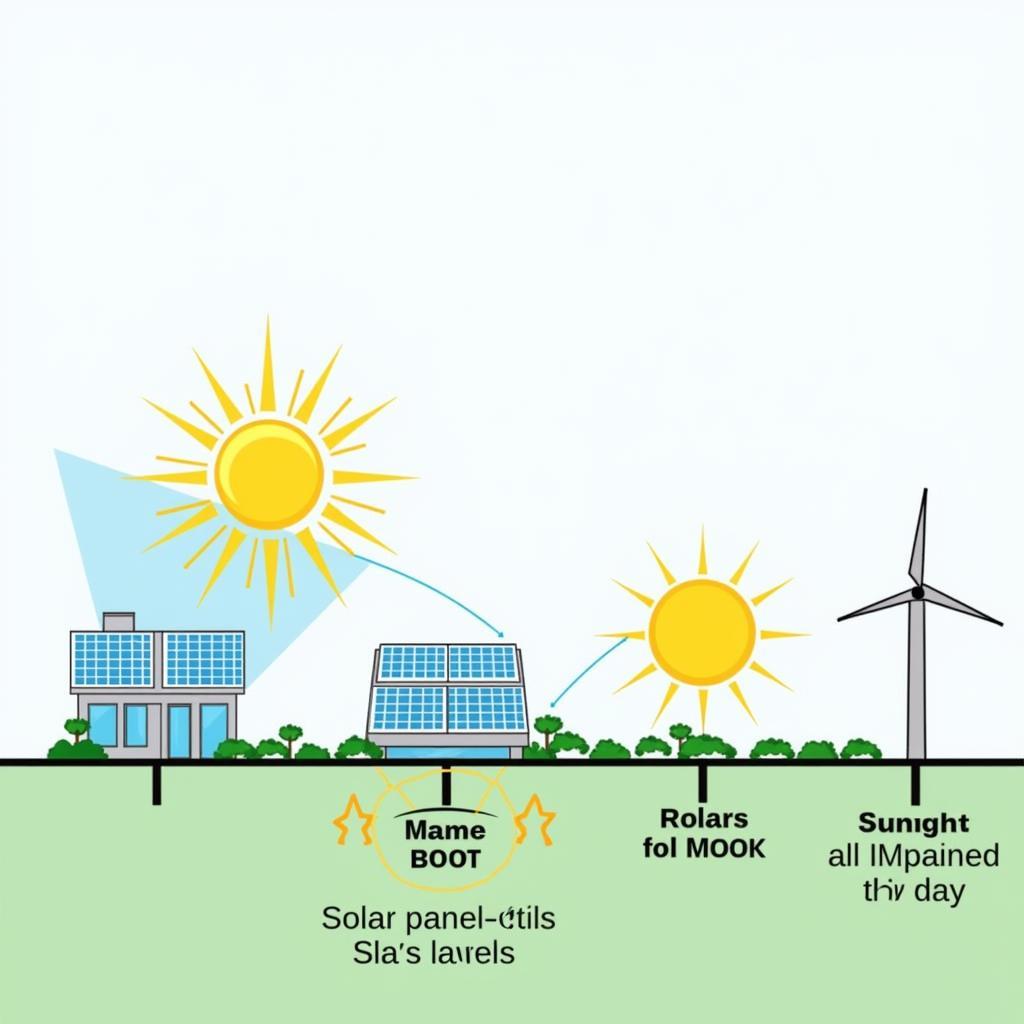The solar angle in Pakistan plays a crucial role in determining the amount of solar energy your panels can harness. Understanding how the sun’s position changes throughout the year and its impact on solar panel output is essential for optimizing your solar energy system’s performance. By understanding the concept of solar angle in Pakistan, individuals and businesses can make informed decisions regarding solar panel installation, orientation, and system design to maximize energy production and financial savings.
Deciphering the Impact of Solar Angle
The angle at which sunlight hits your solar panels directly affects their efficiency. Simply put, a more direct angle results in more energy generation. Here’s a breakdown of the key factors:
- Latitude: Pakistan’s geographical location places it between 24° and 37° north of the equator, resulting in significant solar energy potential. The further north you move within Pakistan, the more the sun’s angle varies throughout the year.
- Time of Day: As the sun moves across the sky, the angle of incidence on your solar panels changes. This is why you’ll notice variations in energy production throughout the day.
- Seasonality: Pakistan experiences distinct seasons. During the summer months, the sun is higher in the sky, leading to longer daylight hours and more direct sunlight. Conversely, winter brings shorter days and a lower sun angle.
 Solar Panel Angle in Pakistan
Solar Panel Angle in Pakistan
Optimizing Solar Panel Tilt for Pakistan’s Solar Angle
To capitalize on Pakistan’s favorable solar angle, it’s essential to install your solar panels at the optimal tilt. This angle allows for the most direct sunlight to reach the panels throughout the year, maximizing energy production.
- General Guideline: A good rule of thumb is to tilt your solar panels at an angle roughly equal to your latitude.
- Seasonal Adjustments: While fixed-tilt systems are common, consider adjustable mounts if you want to fine-tune the angle for optimal performance throughout the year.
Calculating Your Ideal Solar Panel Angle
Determining the precise ideal angle requires considering your specific location and the time of year. Several online solar panel calculator pakistan can assist you in calculating the optimal tilt angle based on your geographical coordinates.
The Role of Solar Panel Orientation
Beyond the tilt angle, the direction your solar panels face, known as azimuth, also significantly influences energy output.
- South-Facing Orientation: In the Northern Hemisphere, including Pakistan, south-facing roofs generally receive the most sunlight throughout the day. This orientation often results in the highest energy yields.
- East-West Orientation: While south-facing is ideal, east and west-facing roofs can still generate substantial solar energy. East-facing panels produce more energy in the morning, while west-facing panels excel in the afternoon.
Overcoming Shading Challenges
Even with the perfect solar angle and orientation, shading can significantly hinder solar panel performance. It’s crucial to identify and mitigate potential sources of shade.
- Trees and Vegetation: Trim or remove any trees or vegetation that might cast shadows on your panels, especially during peak sunlight hours.
- Nearby Structures: Consider the location of nearby buildings or structures that could obstruct sunlight.
- Solar Panel Placement: Strategically position your solar panels on your roof to minimize the impact of shade from chimneys, vents, or other roof obstructions.
The Advantages of Consulting Solar Experts
Navigating the complexities of solar angle, panel tilt, and orientation can feel overwhelming. Consulting with reputable solar installers like solar structure manufacturers in pakistan is highly recommended.
“Understanding your local solar irradiance patterns and optimizing system design accordingly is crucial for maximizing the return on investment for any solar energy system in Pakistan.” – Asim Khan, Solar Energy Engineer.
Conclusion
Harnessing solar energy in Pakistan offers numerous benefits, from reduced electricity bills to a lower carbon footprint. By understanding the importance of solar angle and optimizing your solar panel system accordingly, you can maximize energy generation and enjoy the full potential of solar power. Don’t hesitate to consult with experienced solar professionals to design a system tailored to your unique energy needs.
FAQs: Solar Angle in Pakistan
1. What is the best tilt angle for solar panels in Pakistan?
The ideal tilt angle for solar panels in Pakistan is generally close to your latitude. However, using a solar panel calculator pakistan will provide a more precise angle based on your exact location.
2. Can I still benefit from solar energy with an east or west-facing roof?
Absolutely! While south-facing roofs are ideal, east and west-facing roofs can still generate significant solar energy.
3. How often should I clean my solar panels?
It’s generally recommended to clean your solar panels every 6-12 months. However, more frequent cleaning might be necessary in dusty environments.
4. What is the typical lifespan of solar panels?
Most solar panels come with warranties of 25 years or more, and many continue to produce energy beyond their warranty period.
5. Do I need planning permission to install solar panels in Pakistan?
Local regulations regarding planning permission for solar panel installations vary. It’s best to check with your local authority for specific requirements.
Still have questions or need assistance with your solar energy project?
Contact us today at:
Phone Number: +923337849799
Email: [email protected]
Address: Dera Ghazi Khan Rd, Rakhni, Barkhan, Balochistan, Pakistan.
Our dedicated customer support team is available 24/7 to assist you.